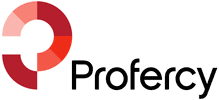The ripple effects from Nutrien’s surprise decision to halt operations at its four ammonia plants in the Caribbean indefinitely were felt immediately across the Atlantic amid a sudden burst of Algerian spot sales at higher prices to those done just 24 hours previously.
The Canadian major said the controlled shut down of its Point Lisas complex was in “response to port access restrictions” and a “lack of reliable and economic natural gas supply that has reduced the free cash flow contribution of the Trinidad Nitrogen operations over an extended period of time”.
With the island home to ten plants that generated an average 270,000t per month of export volume in 2024, the loss of output from its largest producer – Nutrien shipped just over 1m. tonnes last year – was the catalyst for a price rally in North Africa.
Having sold 30,000t at $600pt fob Arzew earlier in the week, Algeria’s Sorfert then concluded 60,000t of sales at $625pt fob shortly after the Nutrien shutdown announcement.
On the face of it, the unexpected downtime at Nutrien’s operations will be a blow to buyers and traders in the Americas and Europe, but given at least one of the group’s units was due to commence a turnaround soon, part of the lost volume was likely already anticipated.
Such maintenance was heard scheduled to coincide with annual natgas curtailments of 30% that will impact all manufacturers on the island for 10 days or more in mid-November, further reducing fourth quarter availability.
With major new capacity in Texas yet to debut, the merchant market West of Suez looks tight until at least year-end, but traders are seeking to optimise arbitrage opportunities for East to West business amid a sudden jump in Chinese export volumes.
One of Mitsui’s tankers is due to depart Lianyungang shortly with 23,400t of spot volume for Moroccan phosphates major, OCP Group, with that recipient also concluding business in Turkey and, possibly, North Africa.
Along with Morocco, Chinese volumes have been offered into Northwest Europe at relatively competitive prices for late Q4/early Q1 arrival, while smaller cargoes have also loaded for buyers in South Korea, Taiwan and Japan.
Saudi shutdown eats into Middle East availability
Firmer prices have been a trend in Asia Pacific since the late-August shutdown of a 1.1m tonne/year plant operated by Saudi Arabia’s Ma’aden, but turnarounds at chemical units across Northeast Asia have seen that price rally run out of steam recently.
Shipments from the Middle East’s largest producer and exporter have been badly disrupted since the Ras Al-Khair unit went quiet, with market participants not expecting a restart until early 2026.
The other good news for buyers in India and Asia Pacific is that manufacturers in Indonesia appear to have plenty of surplus tonnes, with vessels loading regularly at Bontang and Luwuk and several traders currently sending tankers to the wider region to load.
Australian availability also looks decent and a 20,000t spot cargo from Yara’s Pilbara plant was recently dropped in east coast India.
Given the negative Nutrien news, spot activity into Europe was limited as recipients tried to limit their exposure to offshore deliveries and hunt for more favourably priced domestic/regional material.
However, while no new deals into Turkey have yet been announced, buyers are said to have been offered discounted shipments from the Baltic and Iran for November arrival.
Clarity over price direction should emerge in the coming week, with buyers crossing their fingers that Nutrien and local authorities in Trinidad can reach agreements that allow the prompt restart of its multiple plants.
By Richard Ewing
Head of Ammonia/Deputy Editor at Profercy


